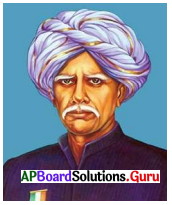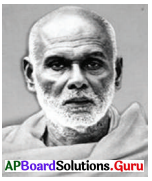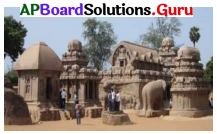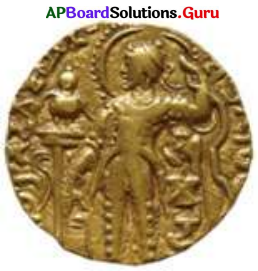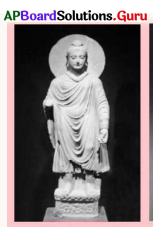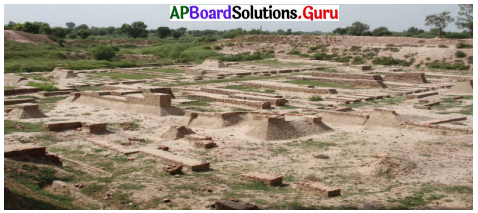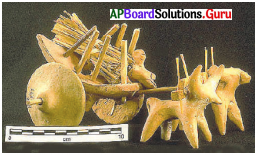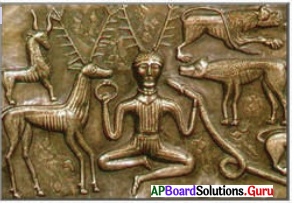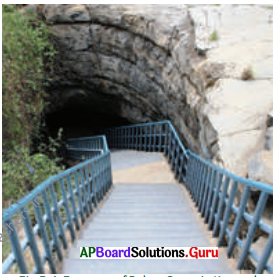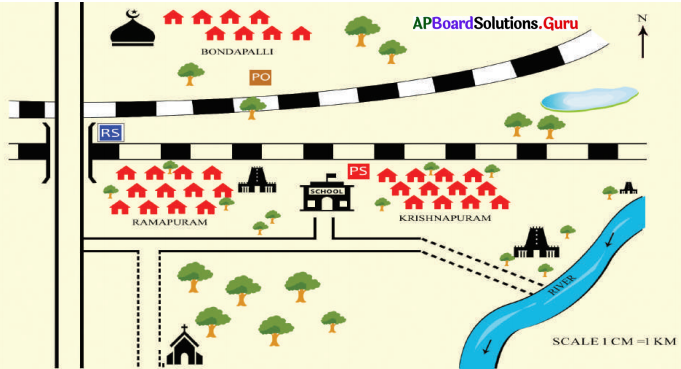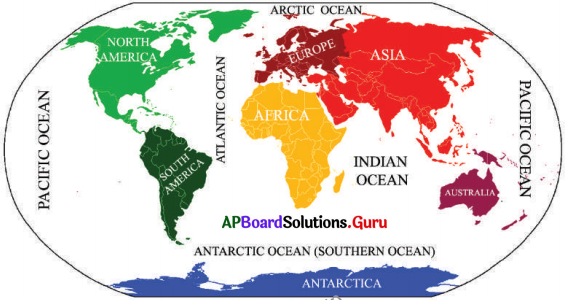Practice the AP 6th Class Science Bits with Answers Chapter 2 Knowing About Plants on a regular basis so that you can attempt exams with utmost confidence.
AP State Syllabus 6th Class Science Bits 2nd Lesson Knowing About Plants with Answers
Choose the correct answer.
Question 1.
The smaller roots that arise from the taproot are known as ……………….
A) Tuberous roots
B) Aerial roots
C) Lateral roots
D) Fibrous roots
Answer:
C) Lateral roots
Question 2.
A cluster of thin and uniform sized roots are seen in
A) Tap root system
B) Fibrous root system
C) A & B
D) None of the above
Answer:
B) Fibrous root system
![]()
Question 3.
The root that grows above the ground to perform additional functions is called
A) Tuberous roots
B) Aerial roots
C) Taproots
D) Fibrous roots
Answer:
B) Aerial roots
Question 4.
Tuberous roots are found in
A) Carrot
B) Radish
C) Beetroot
D) All the above
Answer:
C) Beetroot
Question 5.
The main axis of the shoot system is called …………………
A) Stem
B) Root
C) Flower
D) Fruit
Answer:
A) Stem
Question 6.
The part of the stem between two successive nodes is
A) Terminal bud
B) Auxiliary bud
C) Internode
D) Cotyledon
Answer:
C) Internode
![]()
Question 7.
Choose the edible stem.
A) Neem
B) Banana
C) Sugarcane
D) Cotton
Answer:
C) Sugarcane
Question 8.
Name the plant that stores food in the root.
A) Radish
B) Potato
C) Ginger
D) Turmeric
Answer:
A) Radish
Question 9.
The broad green part of the leaf is
A) Leaf base
B) Petiole
C) Sepals
D) Lamina
Answer:
D) Lamina
Question 10.
Read the followings statements. Choose the correct option.
i) Fibrous root system is present in plants that have reticulate venation.
ii) Tap root system is present in plants that have reticulate venation.
A) Only i is correct
B) ii is correct and i is wrong
C) both i & ii are correct
D) both i & ii are wrong
Answer:
B) ii is correct and i is wrong
![]()
Question 11.
Petals which are in different colors are the parts of …………………
A) Roots
B) Flower
C) Leaves
D) Fruit
Answer:
B) Flower
Question 12.
Green leaves prepare food by the process of ………………..
A) Respiration
B) Reproduction
C) Photosynthesis
D) Transpiration
Answer:
C) Photosynthesis
Question 13.
To perform photosynthesis plants, need
A) Water
B) Carbon dioxide
C) Sunlight and chlorophyll
D) All of these
Answer:
D) All of these
Question 14.
The underground part of the main axis of a plant is known as
A) Stem
B) Root
C) Bud
D) Leaf
Answer:
B) Root
![]()
Question 15.
Identify the plant that has fibrous roots
A) Rice
B) Mango
C) Neem
D) Amla
Answer:
A) Rice
Question 16.
Which of the following is not a part of the Taproot system?
A) Taproot
B) Lateral roots
C) Fibrous roots
D) A and B
Answer:
D) A and B
Question 17.
Dicot plants have these root systems and venation
A) Taproot & parallel venation
B) Taproot system and Reticulate venation
C) Fibrous roots & Parallel venation
D) Fibrous roots & Reticulate venation
Answer:
B) Taproot system and Reticulate venation
Question 18.
Aerial roots are helpful for the respiration in ………………..
A) Aquatic plants
B) Terrestrial plants
C) Mangroves
D) Desert plants
Answer:
C) Mangroves
![]()
Question 19.
The plant that has aerial roots to give additional support is ……………….
A) Banyan tree
B) Sugar cane
C) Maize
D) All the above
Answer:
D) All the above
Question 20.
The bud present at the axis of the leaf
A) Terminal bud
B) Auxiliary bud
C) Epiphyllous bud
D) Apical bud
Answer:
B) Auxiliary bud
Question 21.
Conduction of food from leaves to other parts takes place by
A) Root
B) Leaf
C) Stem
D) Flower
Answer:
C) Stem
Question 22.
Example of Tuberous stem
A) Potato
B) Mangrove
C) Beetroot
D) Cabbage
Answer:
A) Potato
![]()
Question 23.
A stalk-like structure of a leaf
A) Lamina
B) Petiole
C) Leaf base
D) Veins
Answer:
B) Petiole
Question 24.
Which one is not a part of the leaf?
A) Lamina
B) Petiole
C) Midrib
D) Axis
Answer:
D) Axis
Question 25.
The arrangement of veins in the lamina is called
A) Conduction
B) Transpiration
C) Venation
D) Respiration
Answer:
C) Venation
Question 26.
Food is prepared for the plant by the process of
A) Photosynthesis
B) Respiration
C) Transpiration
D) Conduction
Answer:
A) Photosynthesis
![]()
Question 27.
This one acts as a nose in the leaf
A) Midrib
B) Stomata
C) Lamina
D) Veins
Answer:
B) Stomata
Question 28.
Which part of the plant produces fruits?
A) Stem
B) Leaf
C) Flower
D) Root
Answer:
C) Flower
Question 29.
Which of the following attract insects for pollination?
A) Petals
B) Midrib
C) Lamina
D) Petiole
Answer:
A) Petals
Fill in the blanks.
1. The underground part of the main axis of a plant is known as ………………..
Answer:
root
2. Tap root system consists of a single root, called …………………
Answer:
Taproot
3. Water absorbed through the ………………… in plants.
Answer:
Roots
![]()
4. Roots which store food materials are called ………………… roots.
Answer:
Taproot
5. Seed leaf within the seed is called …………………
Answer:
Cotyledon
6. ………………. is an example of the tuberous stem.
Answer:
Potato/ ginger
7. The buds present at the axils of the leaves are called …………………
Answer:
auxiliary bud
8. ………………… connects leaf lamina with the stem.
Answer:
Petiole
9. Prominent lines that appear on the leaf are called …………………
Answer:
Veins
10. The arrangement Of veins in the lamina is called …………………
Answer:
Venation
11. Plants with fibrous roots possess ………………… venation in their leaves.
Answer:
parallel
12. Loss of water in the form of vapour by leaves is called …………………
Answer:
Transpiration
13. Dicot plants have ………………… root system.
Answer:
Tap
![]()
14. Leaves loss excess water by the process of …………………
Answer:
Transpiration
15. The ………………… transports the water absorbed by the roots to different parts of the plant.
Answer:
stem
16. A traditional food of Konaseema of Godavari dist is …………………
Answer:
Pottikkalu
17. Pottikkalu is healthy and delicious with ………………… flavour.
Answer:
Jack fruit
18. Preparation1 of food in the plants by the process of …………………
Answer:
Photosynthesis
19. The exchange of gases between the plant and atmosphere takes place by …………………
Answer:
stomata
20. ……………….. are present in the outer surface layer of the leaf.
Answer:
Stomata
21. The plants with taproot system have leaves with ………………… venation.
Answer:
Reticulate
22. The plants with ………………… system have leaves with parallel venation.
Answer:
Fibrous
![]()
23. The long vein that presents in the middle of the lamina is …………………
Answer:
midrib
24. ………………… acts as a skeleton of the leaf.
Answer:
Veins
25. The part of the stem between two successive nodes is called …………………
Answer:
Internode
26. The stems that stores the food materials are known as ………………… Stems.
Answer:
Tuberous
27. The main root of a plant is …………………
Answer:
taproot
28. Finger millet has only one cotyledon. So it is a ………………… Plant.
Answer:
Monocot
![]()
Match the following:
Question 1.
List-A List-B
A) Root ( ) 1. Gives beauty of nature
B) Stem ( ) 2. Preparation of food
C) Leaf ( ) 3. Contain cotyledons
D) Flower ( ) 4. Water transport from root to leaves
E) Seed ( ) 5. Absorption of water
Answer:
A – 5
B – 4
C – 2
D – 1
E – 3
Question 2.
List-A List-B
A) Black gram ( ) 1. Parallel venation
B) Tomato ( ) 2. Tap root system
C) Finger millets ( ) 3. Monocot
D) Banyan ( ) 4. Dicot
E) Grass ( ) 5. Aerial roots
Answer:
A – 2
B – 4
C – 3
D – 5
E – 1
![]()
Question 3.
List-A List-B
A) Radish ( ) 1. Leaves
B) Sugarcane ( ) 2. Flower
C) Mangroves ( ) 3. Stem
D) Stomata ( ) 4. Root
E) Pollination ( ) 5. Aerial roots
Answer:
A – 4
B – 3
C – 5
D – 1
E – 2
Question 4.
List-A List-B
A) Stomata ( ) 1. Long vein
B) Lamina ( ) 2. Branches of midrib
C) Petiole ( ) 3. Green flat portion
D) Midrib ( ) 4. Stalk part of a leaf
E) Veins ( ) 5. The nose of the plant
Answer:
A – 5
B – 3
C – 4
D – 1
E – 2

